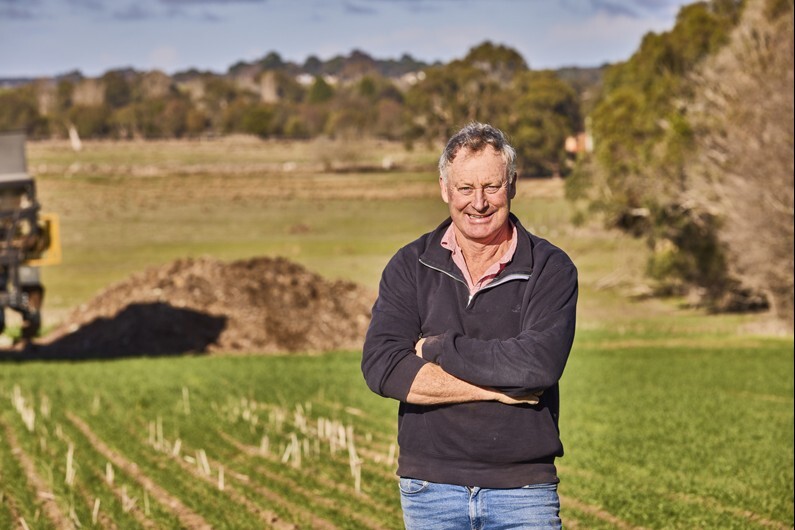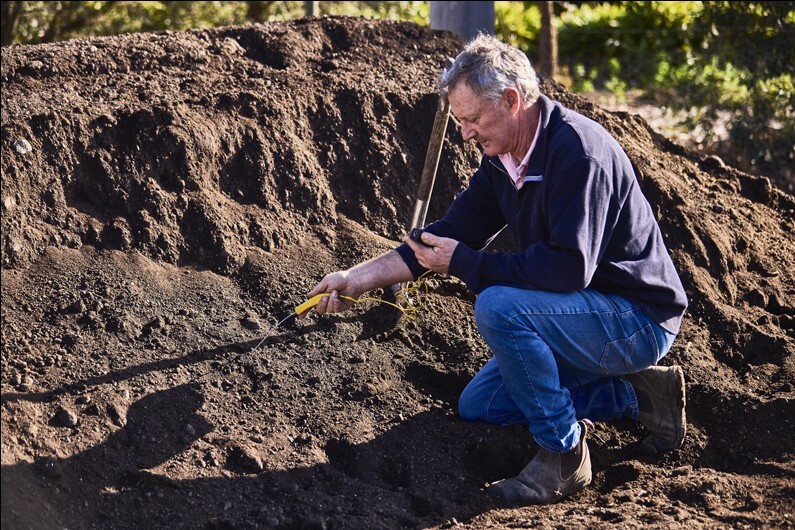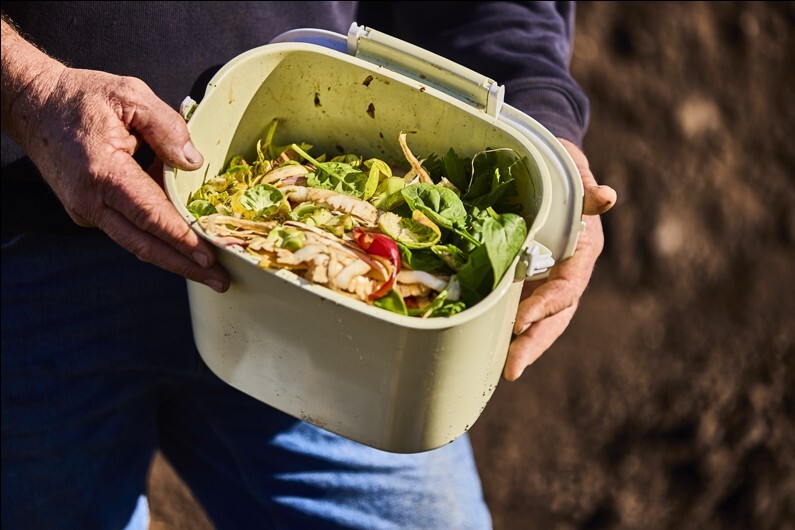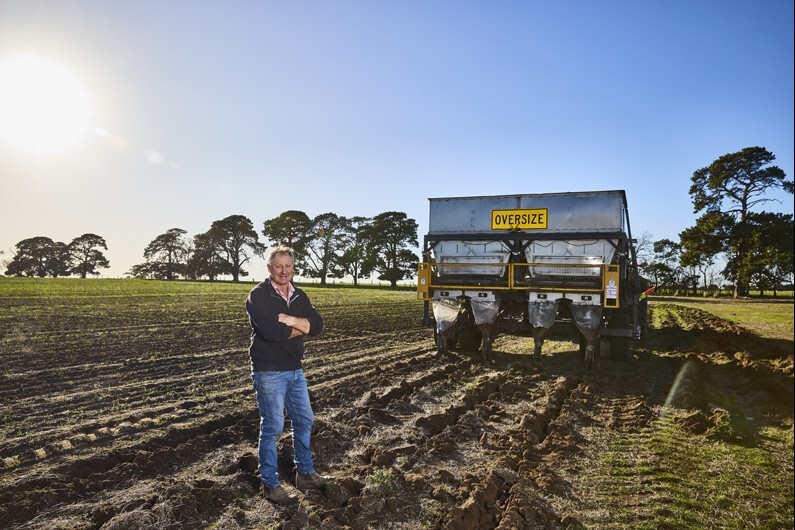The farmer fighting compost contamination

On a quiet farm in southwest Victoria, Simon Falkiner is growing more than crops – he’s growing a movement. The seasoned farmer has spent years transforming degraded soils using compost made from Victoria’s food and garden organics (FOGO) bins. But one issue threatens this circular solution: contamination.
“Contamination is the number one issue – more than cost,” Simon says.
The challenge: compost contamination
Reducing contamination starts at home, with simple choices about what goes into the bin. Contaminants like plastic, glass, and chemical residues from plastic can compromise entire batches of compost, making them unusable and forcing farmers to send them to landfill. For Simon, who relies on clean compost to improve soil health and crop yields, the stakes are high.
 Simon testing the temperature of compost to ensure optimal microbial activity – hot composting helps break down organic matter efficiently and safely.
Simon testing the temperature of compost to ensure optimal microbial activity – hot composting helps break down organic matter efficiently and safely. Why clean compost matters
The collective effort of households to keep compost clean is helping farmers like Simon build healthier soils and grow better crops.
FOGO compost is packed with nutrients and carbon – key ingredients for rebuilding Victoria’s tired subsoils. Simon’s farm has seen dramatic improvements since he started blending compost with gypsum and other amendments to boost root growth and water retention.
“We’ve increased our soil carbon from 0.5% to 2%,” he says. “That’s the basis of better water holding capacity, better nutrient recycling – it’s one of the drivers of improvement in soil health.”
The impact of plastic
But the success of FOGO compost depends on what goes into the bin – and what doesn’t.
Plastic and the chemicals it’s made from negatively affect soil fauna, such as earthworms and other microorganisms. As plastic pollution increases it can cause permanent damage to the soil and can undo some of the positive effects of using compost. Even small bits of plastic or other non-organic material can have lasting impacts, making it vital to keep these out of the FOGO bin.
 Simon demonstrating what goes in your FOGO bin – only food scraps and garden organics like veggie peels and leafy greens. No plastic, no packaging, just compostable goodness!
Simon demonstrating what goes in your FOGO bin – only food scraps and garden organics like veggie peels and leafy greens. No plastic, no packaging, just compostable goodness! Simple rules for FOGO success
“For communities to have clean, healthy food, they must correctly dispose of the waste they produce. It’s as simple as that,” Simon says. “Rubbish in, rubbish out.”
His advice to households is blunt but effective:
“If you can’t eat it, don’t put it in your FOGO bin.”
That means no plastic bags, no fruit stickers, no takeaway containers – even if labelled “compostable.” These items don’t break down properly and can contaminate the final product, putting farmers and food systems at risk.
“Make sure all the foreign bodies are left out,” Simon urges. “Don’t take shortcuts. It makes it easier to compost and safer for everyone down the line.”
 Simon uses a tractor-mounted spreader to apply mature compost – boosting soil health and closing the loop on organic waste for a thriving farm ecosystem.
Simon uses a tractor-mounted spreader to apply mature compost – boosting soil health and closing the loop on organic waste for a thriving farm ecosystem. Looking ahead: protecting our food system
In the fields of southwest Victoria, the soil is thriving. But the future of compost – and the food it helps grow – depends on keeping plastic and other rubbish out of our FOGO bins. Small actions in the kitchen can have a big impact on the land, helping to ensure a healthier, more sustainable food system for all.
Related pages
20 years of changing what’s possible
For two decades, we have led the way to a sustainable future – cutting waste, driving down emissions, and turning policy into real action across homes, communities, and businesses.
But none of it happens without you, Victoria. Your choices. Your drive. Your belief in a better way.

